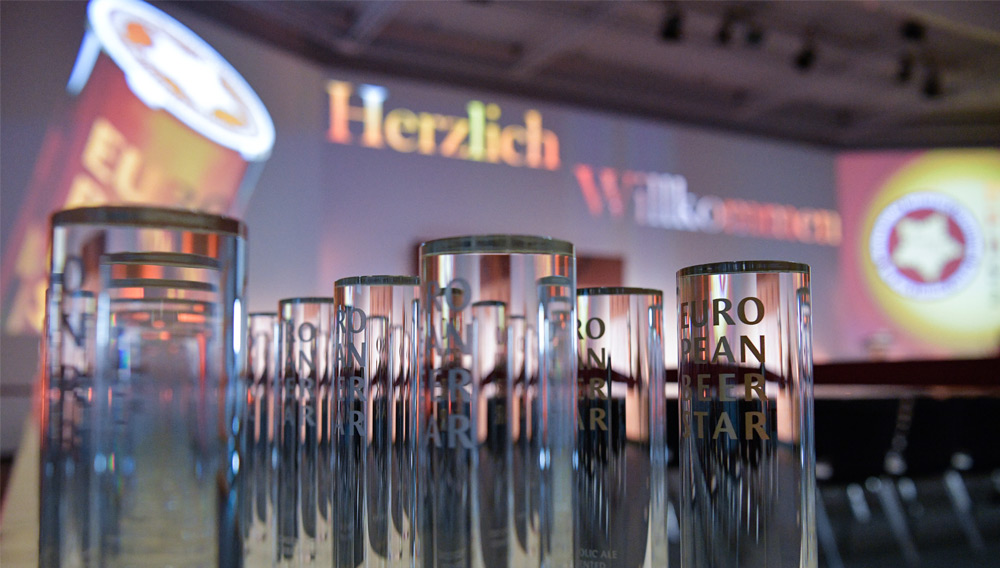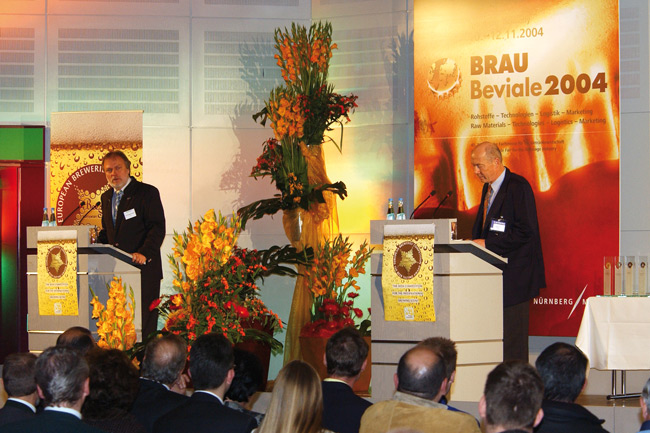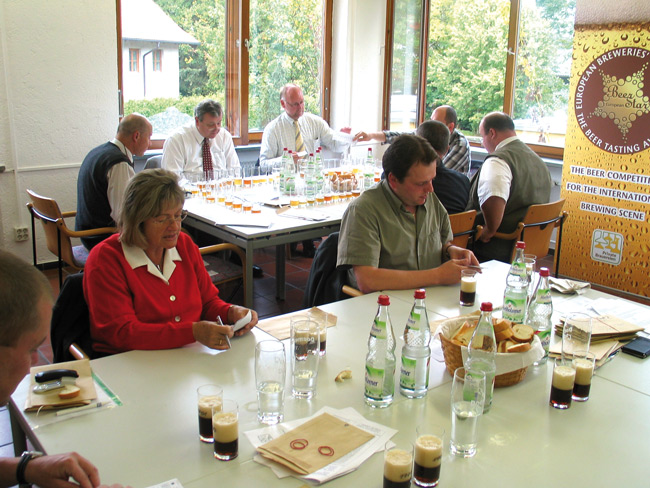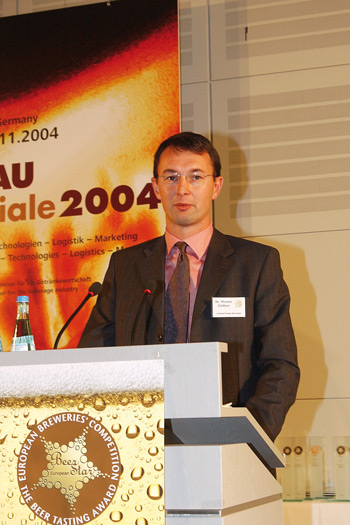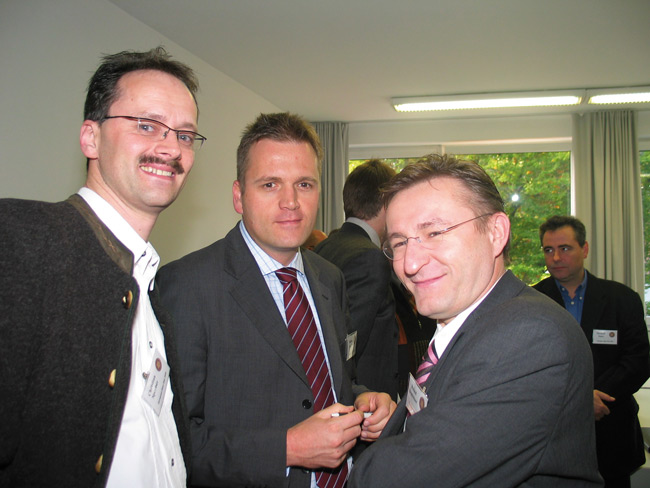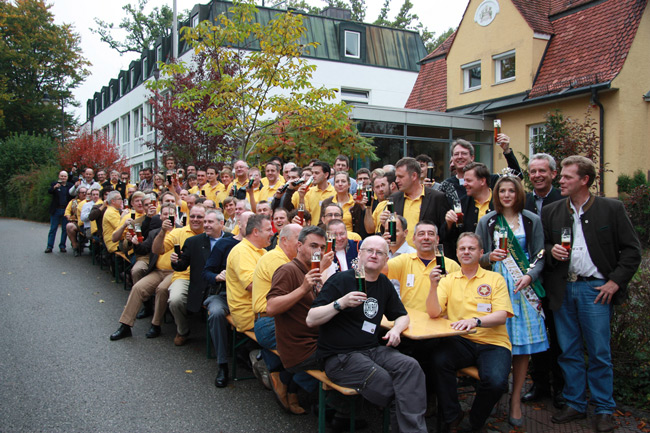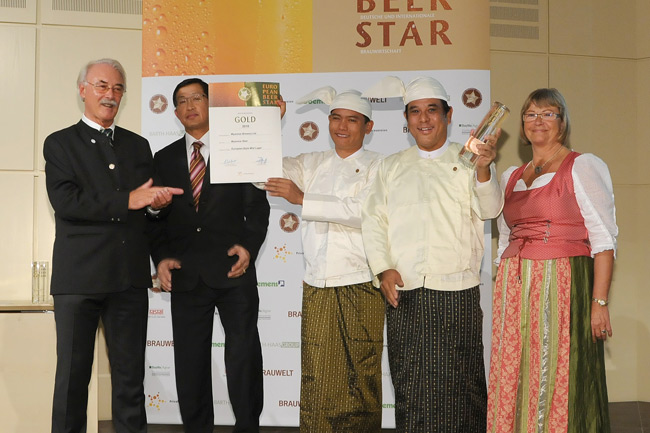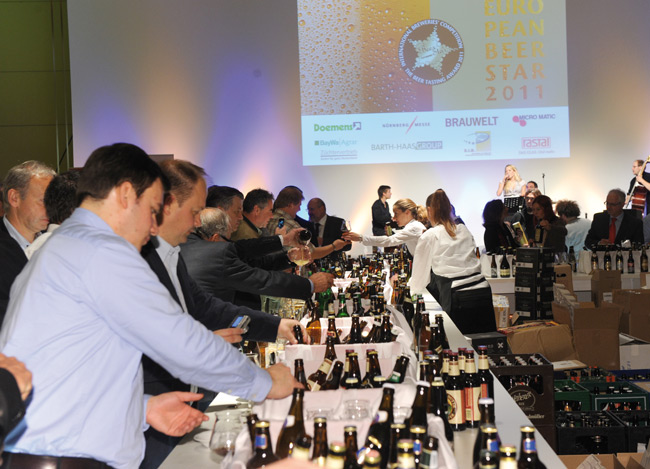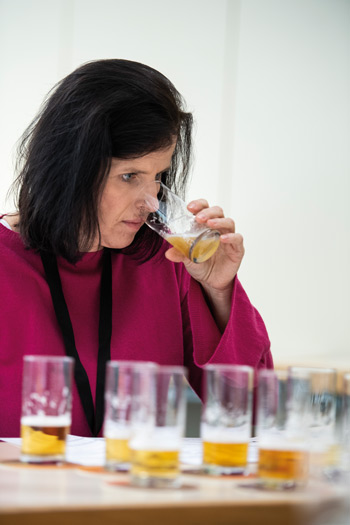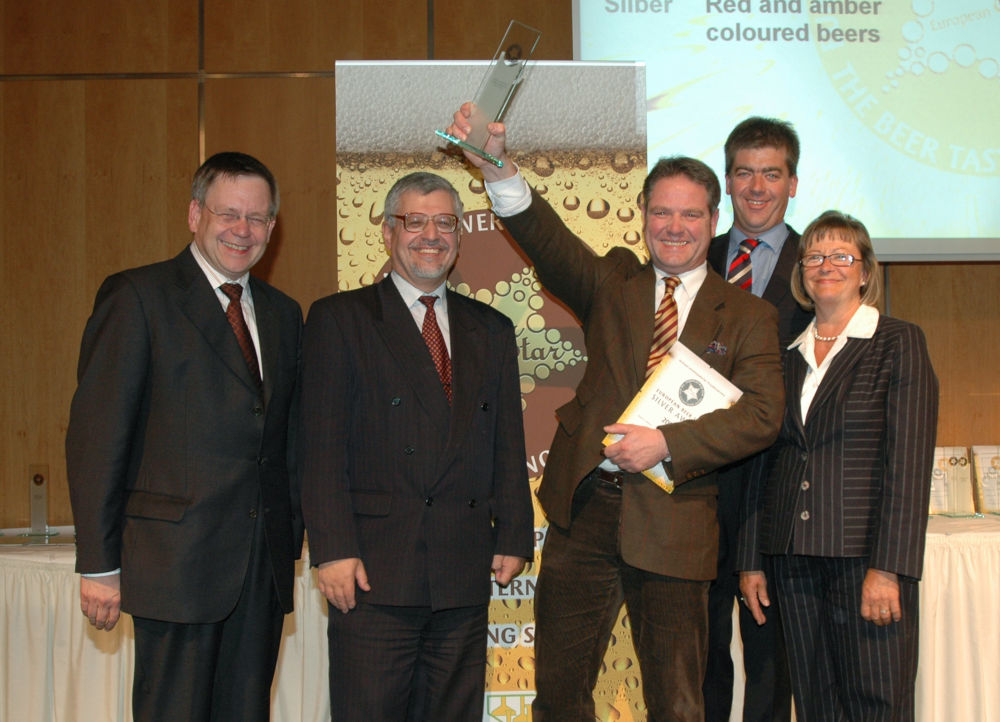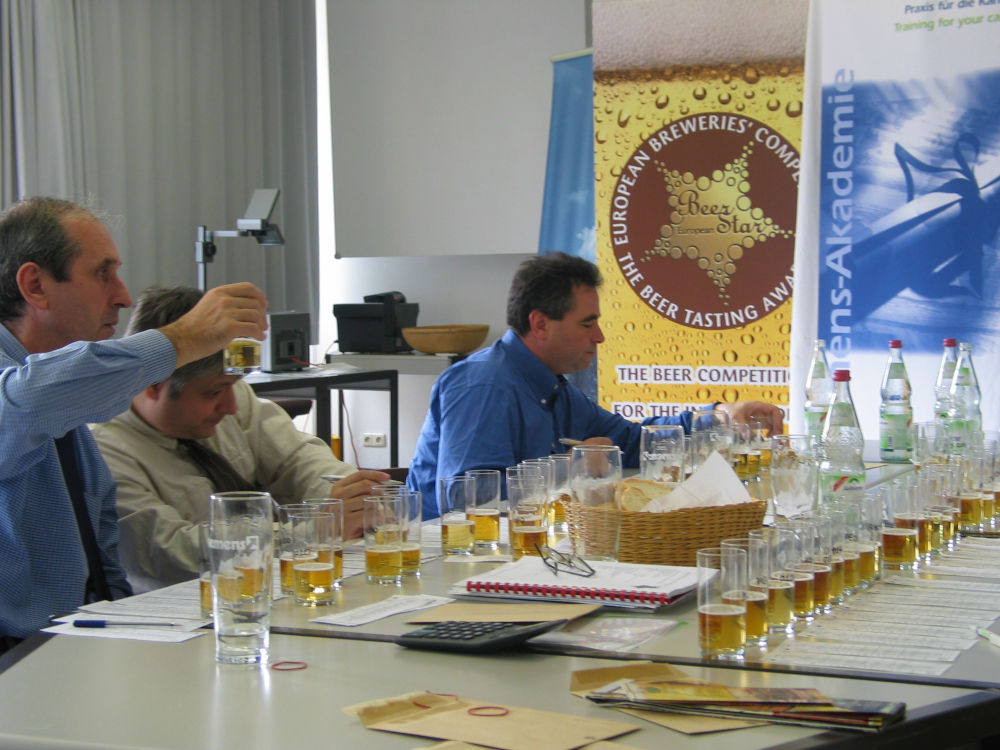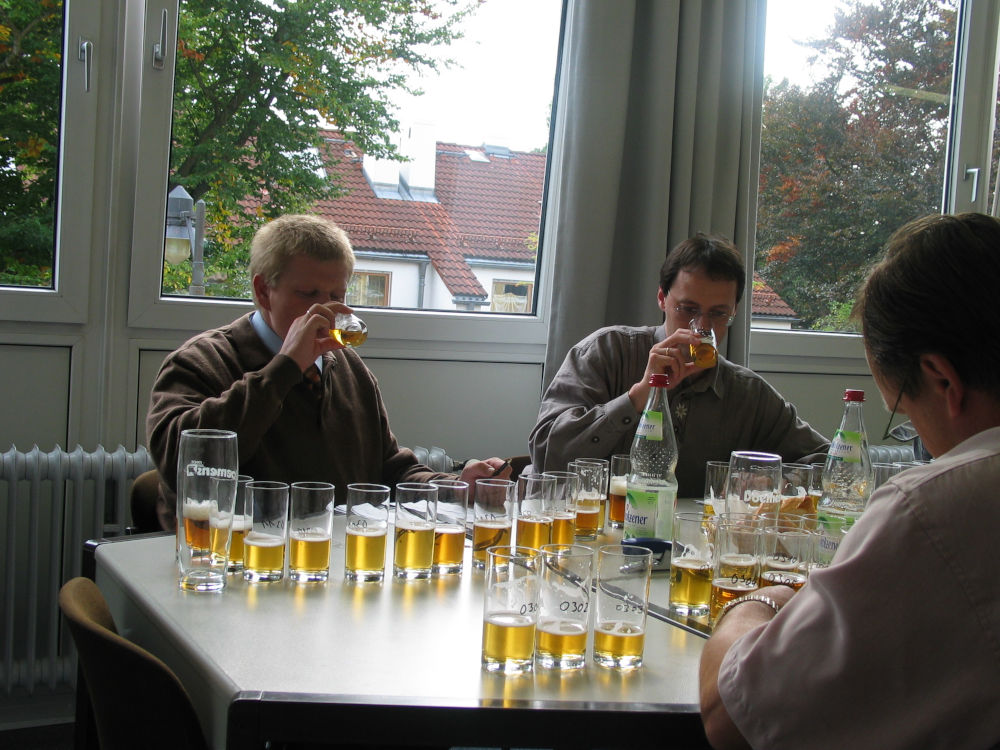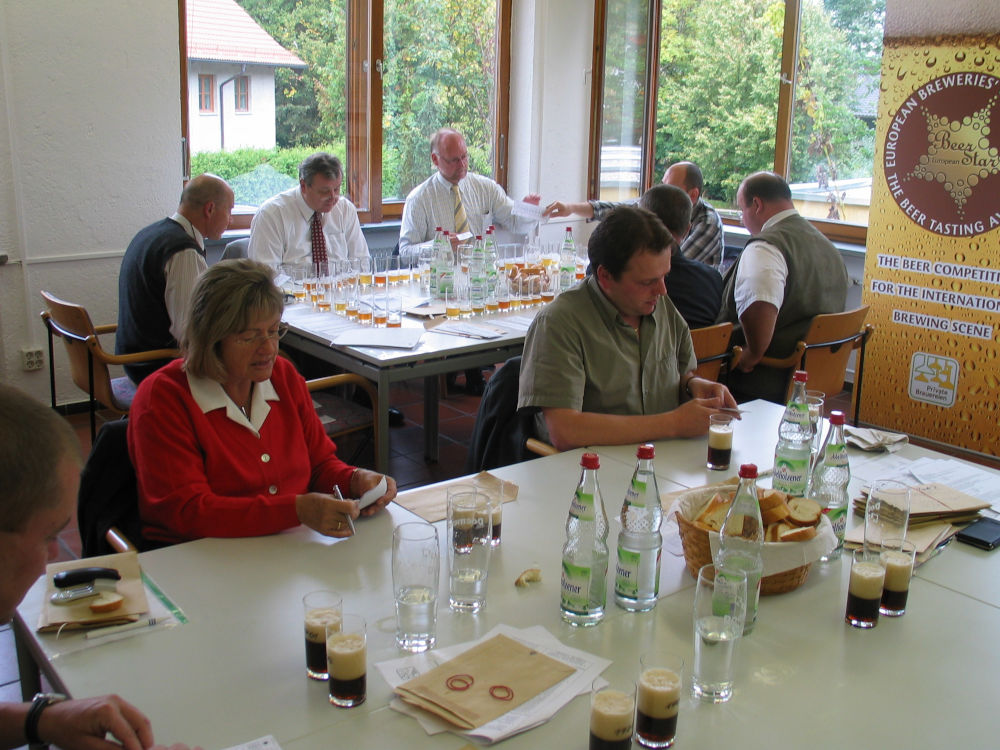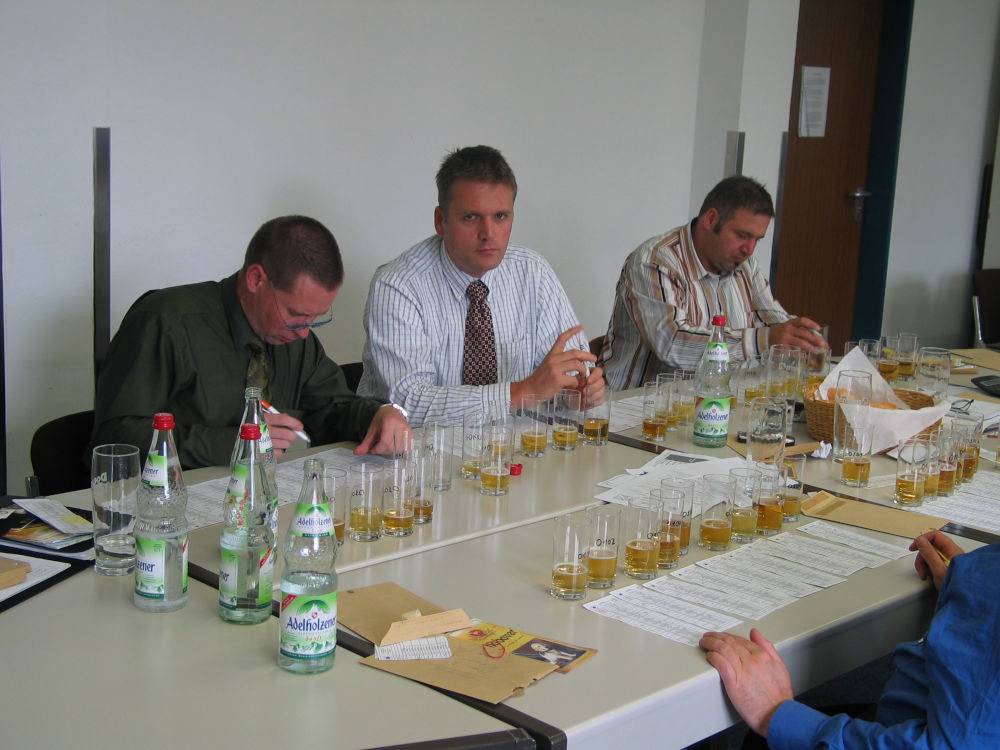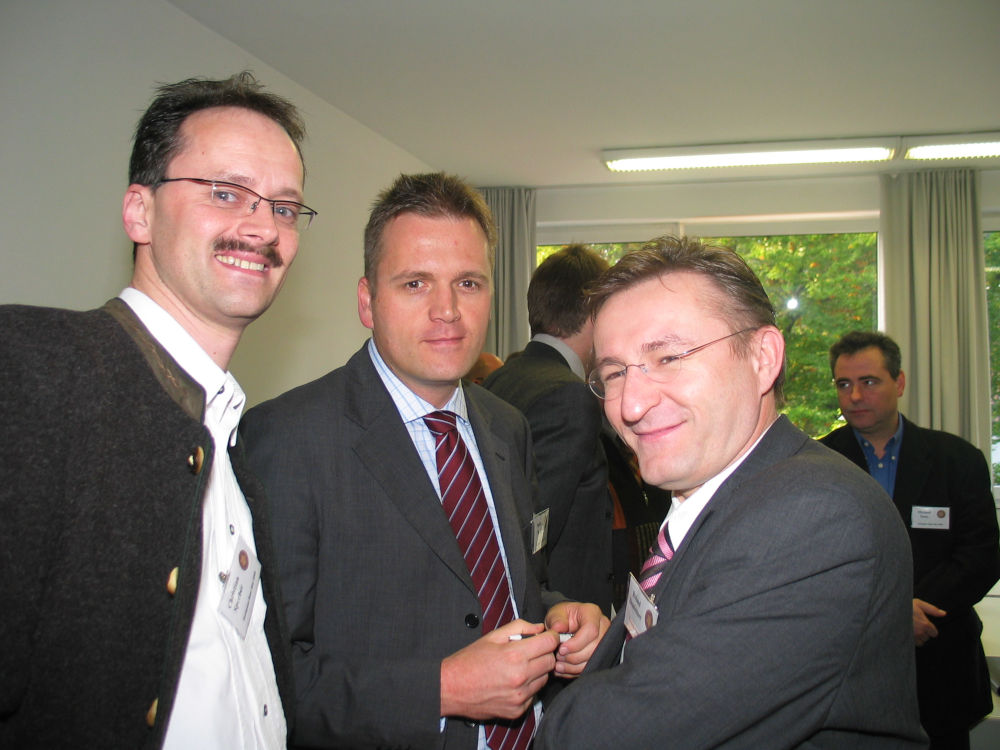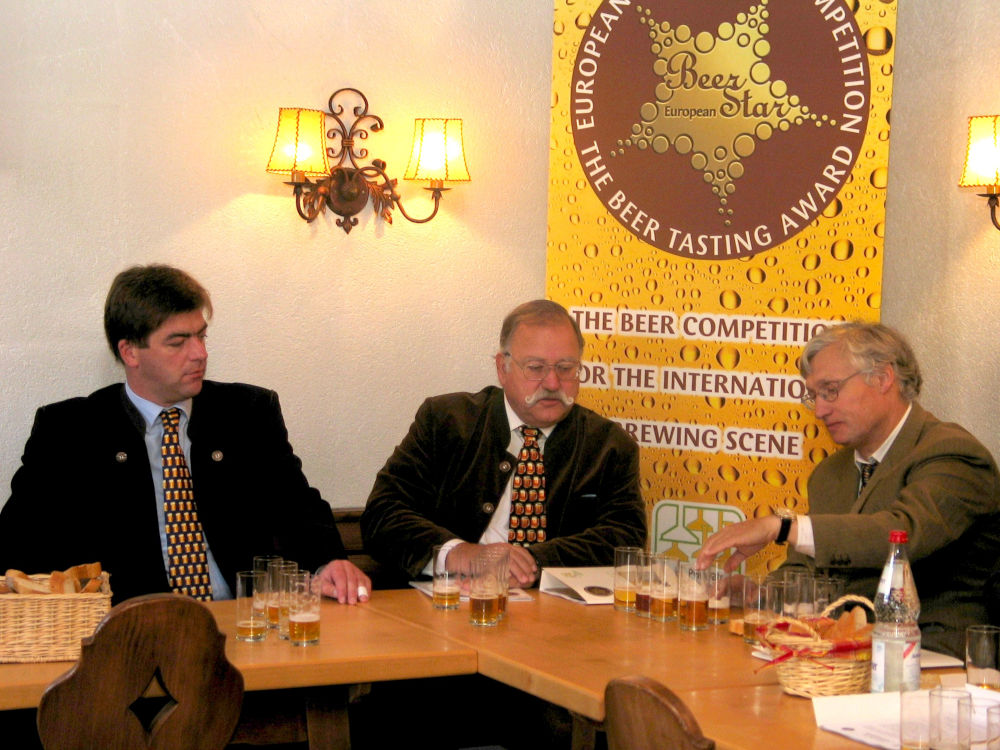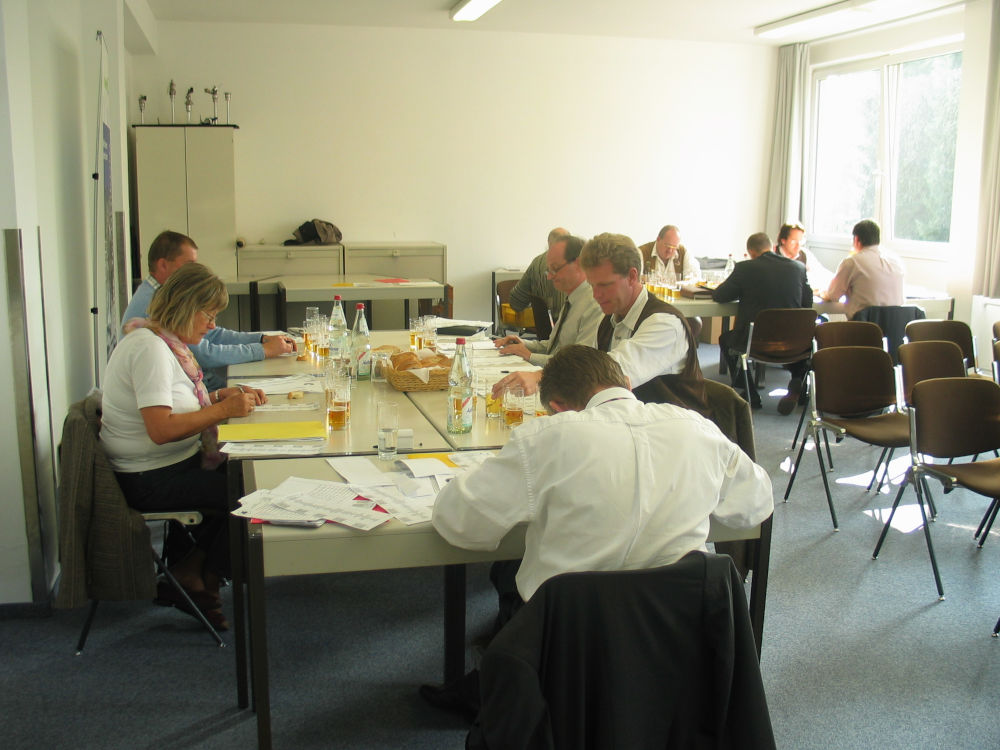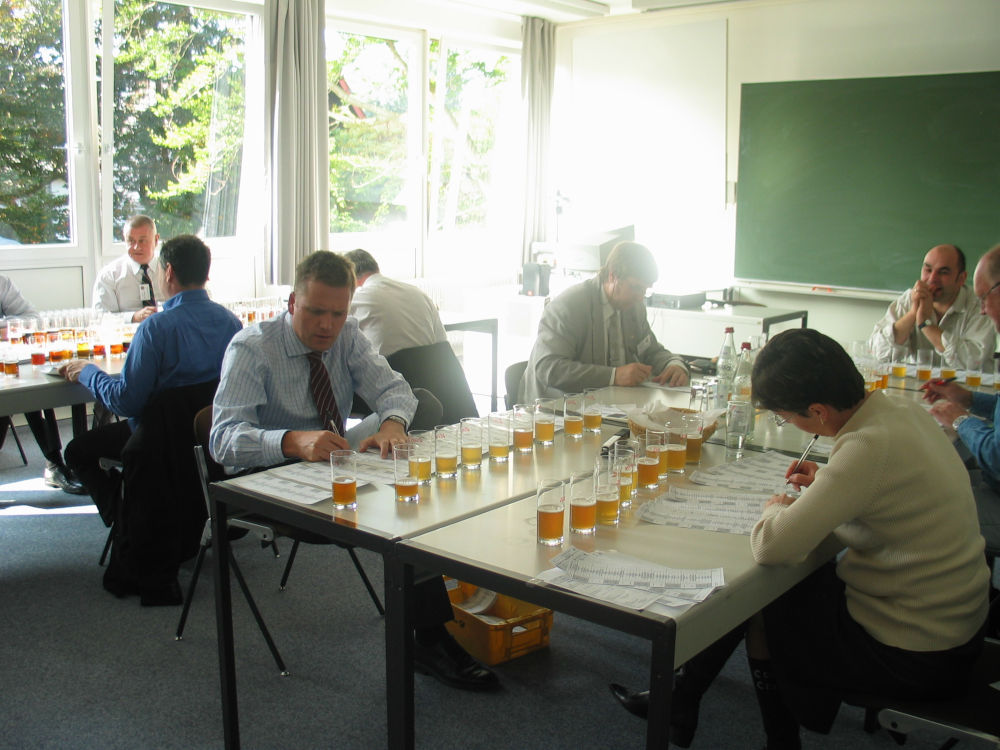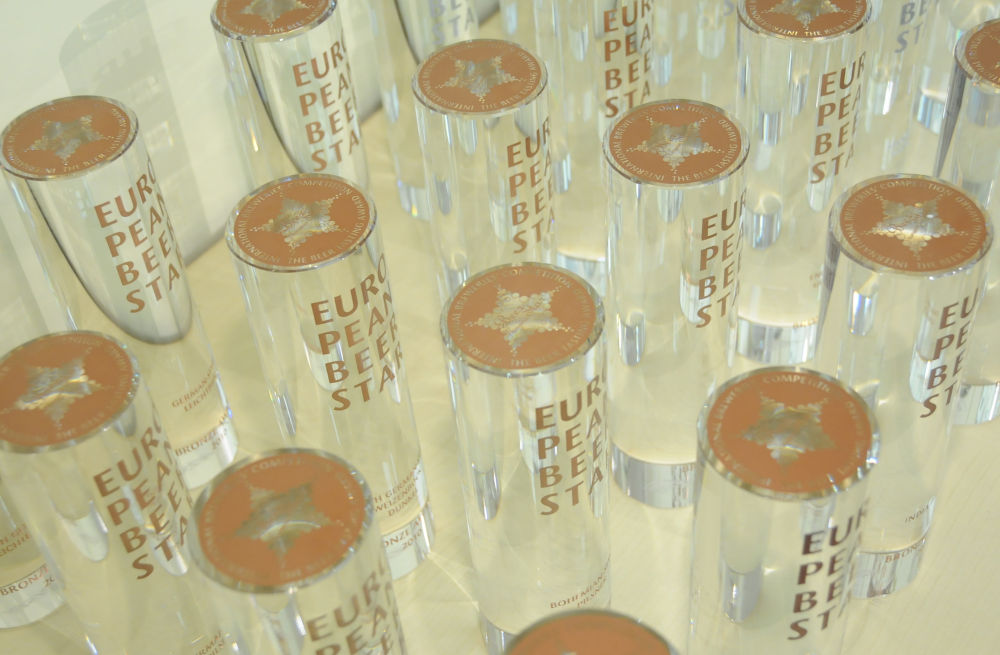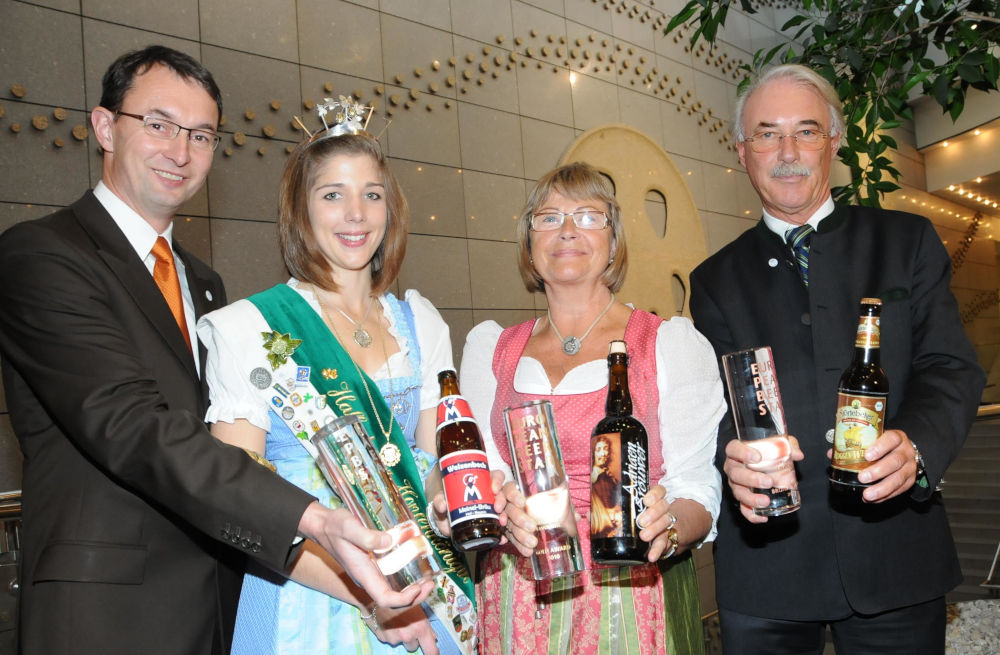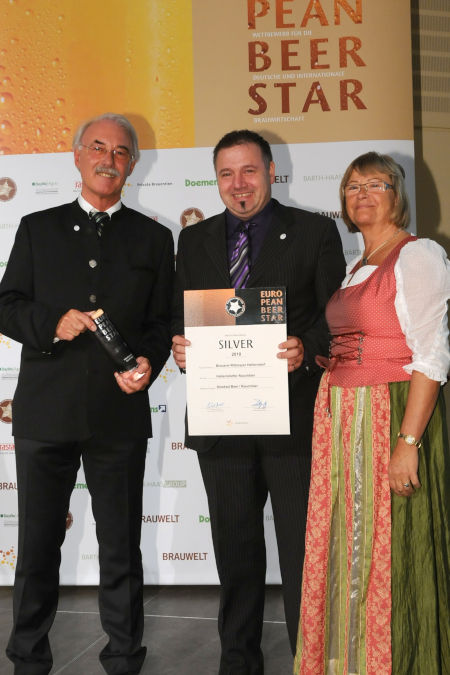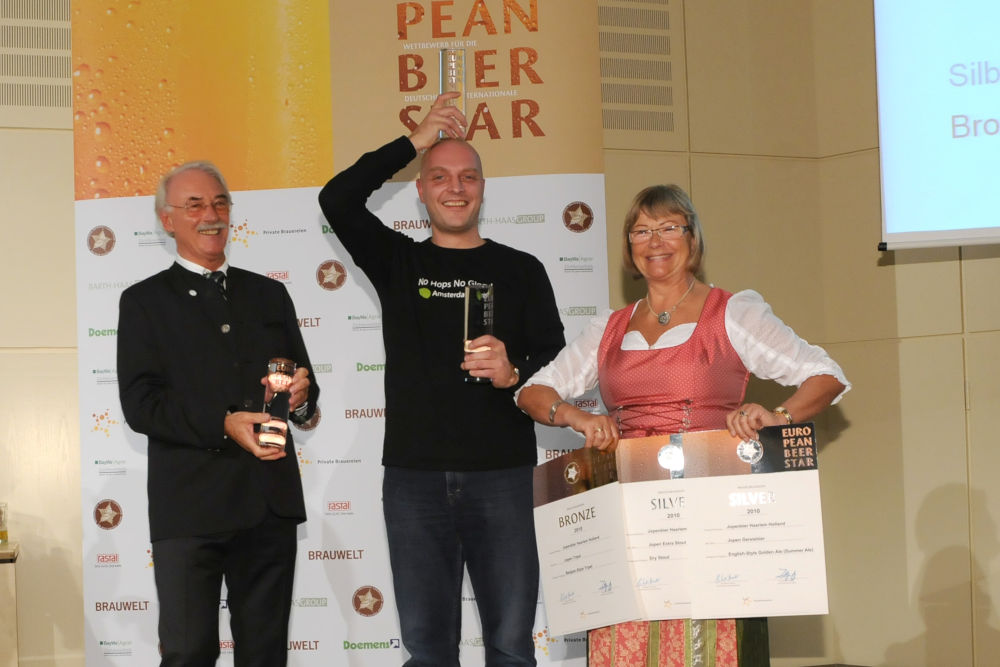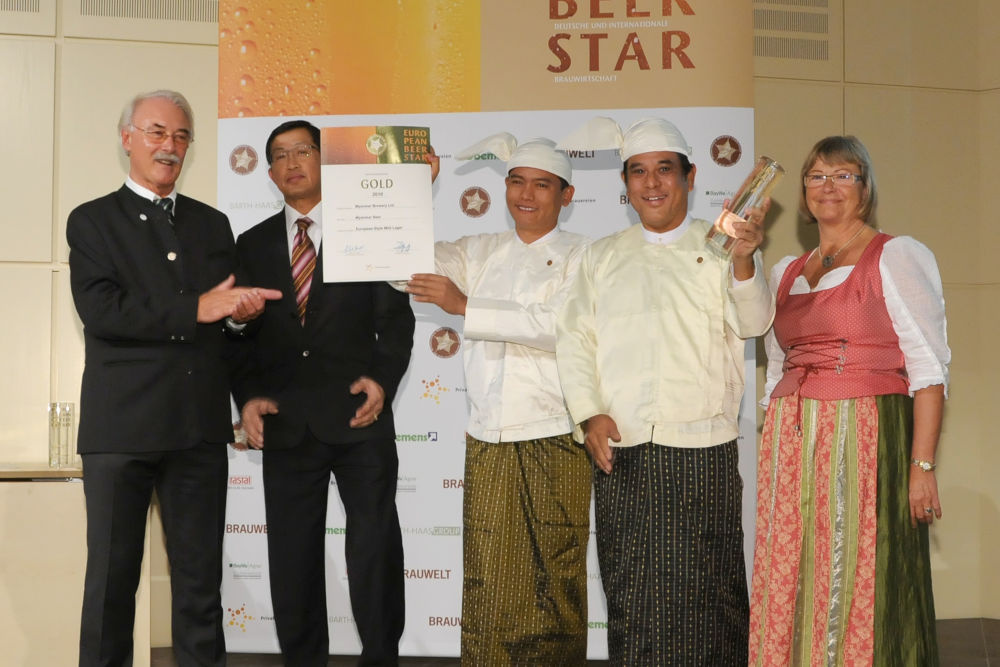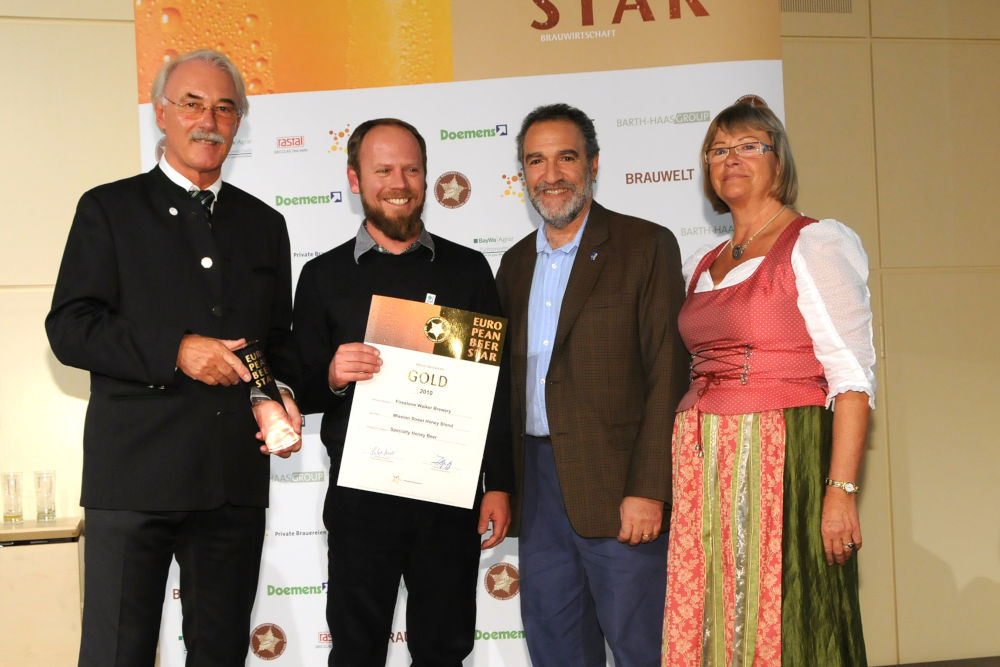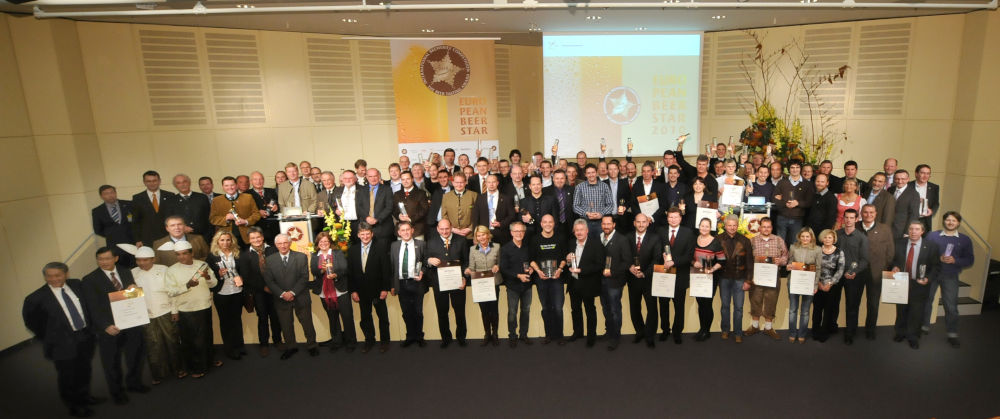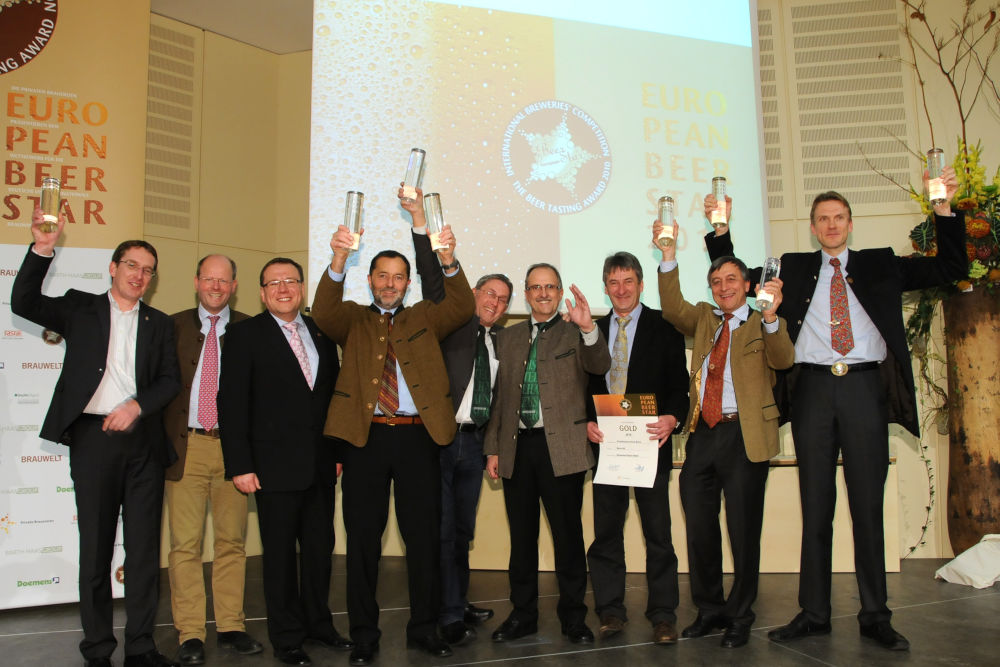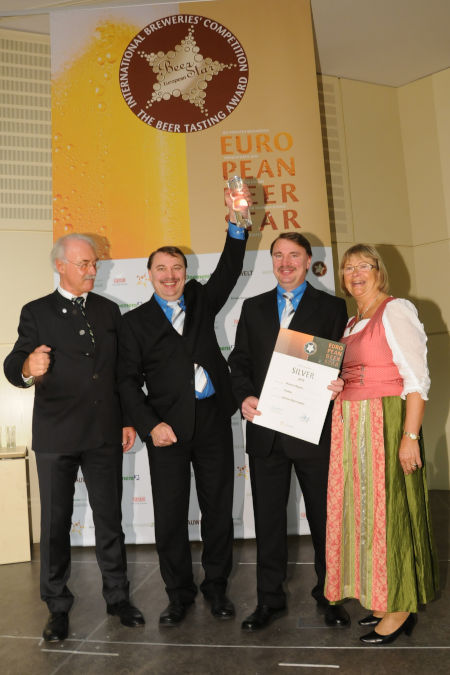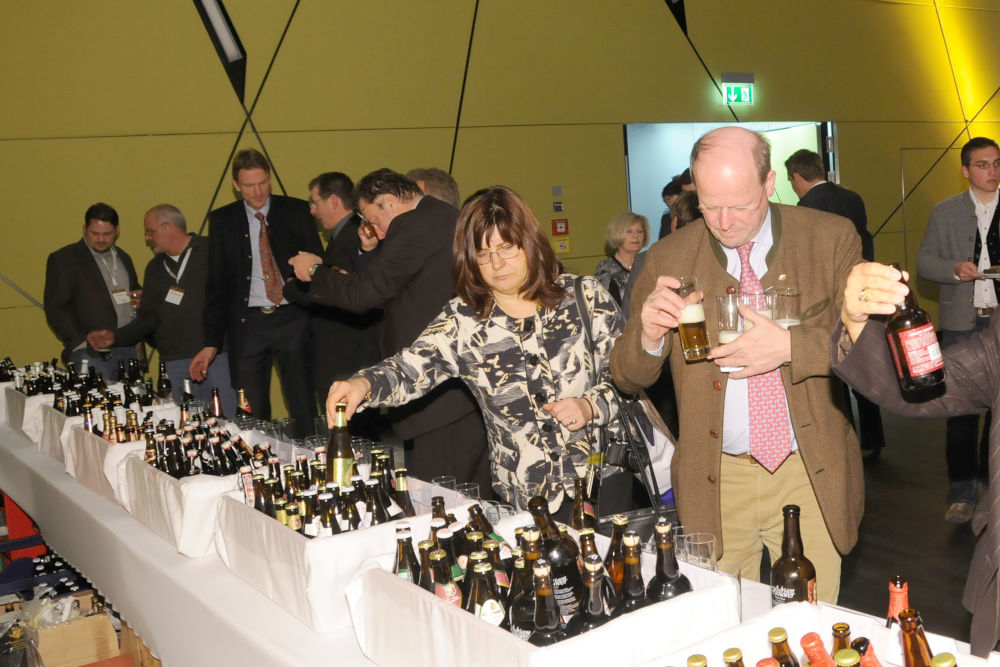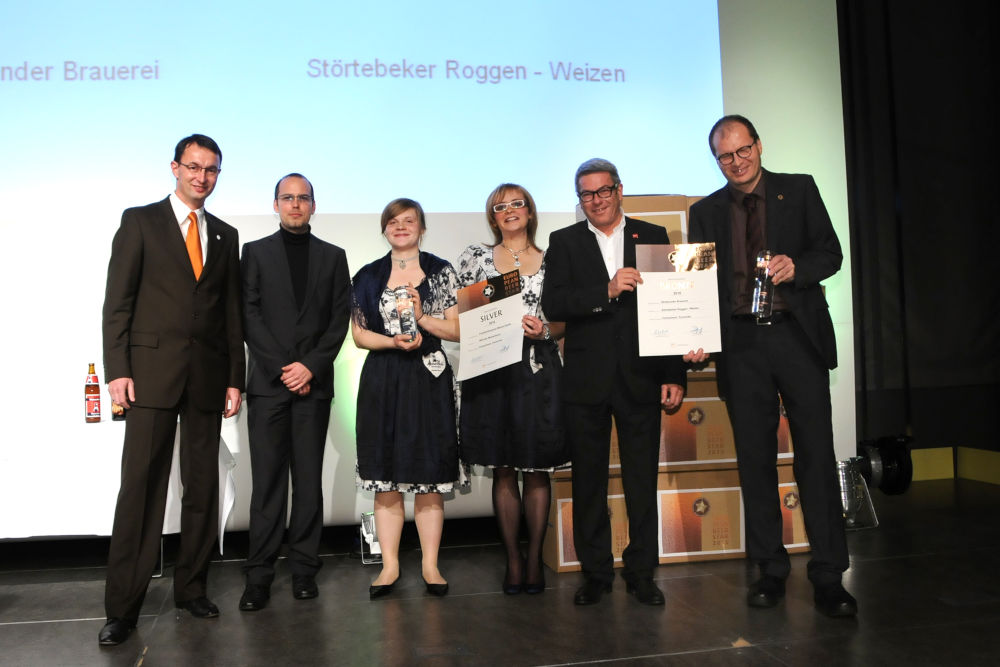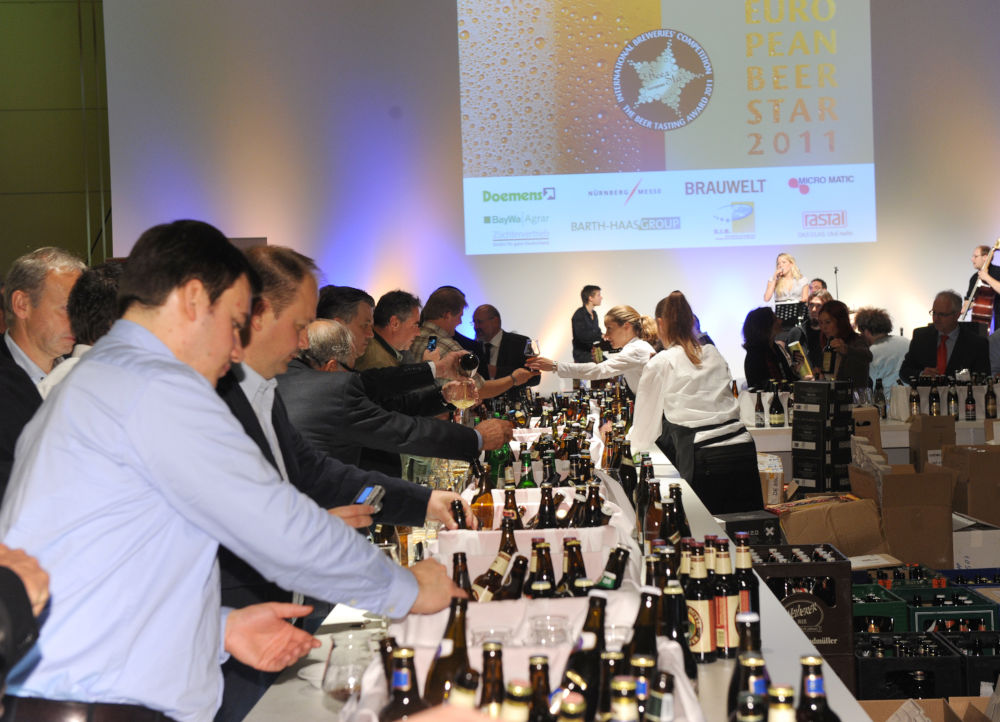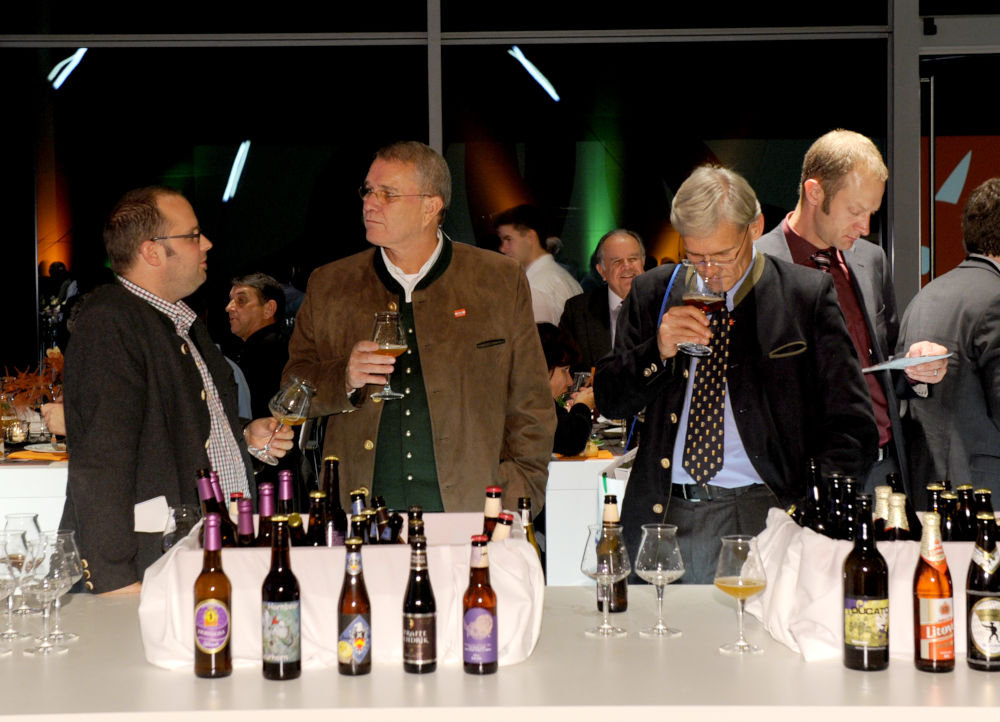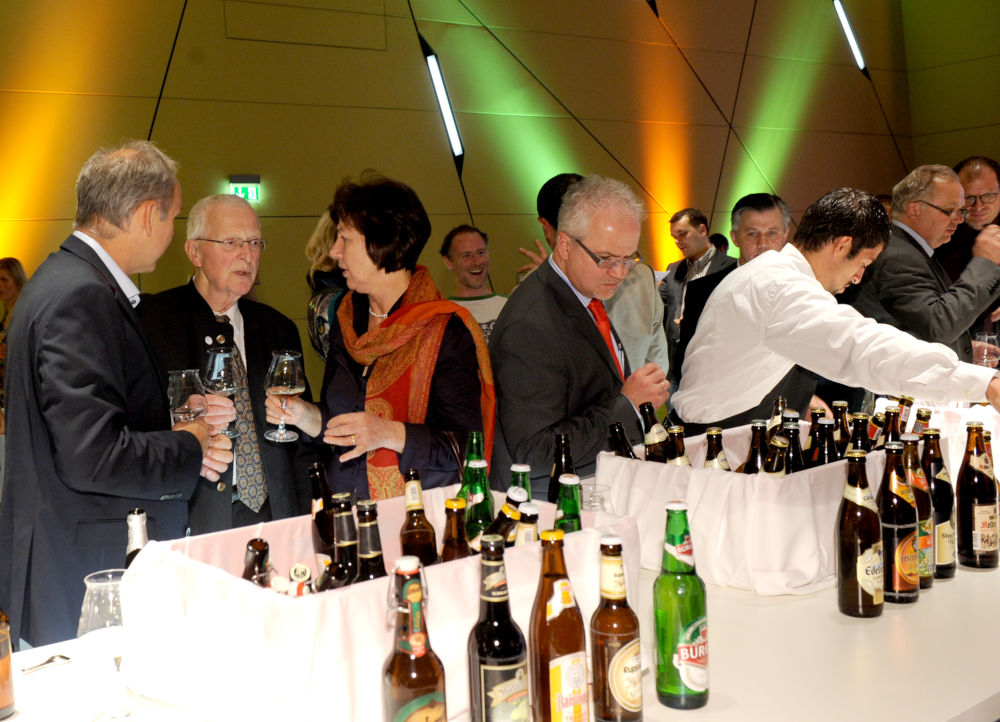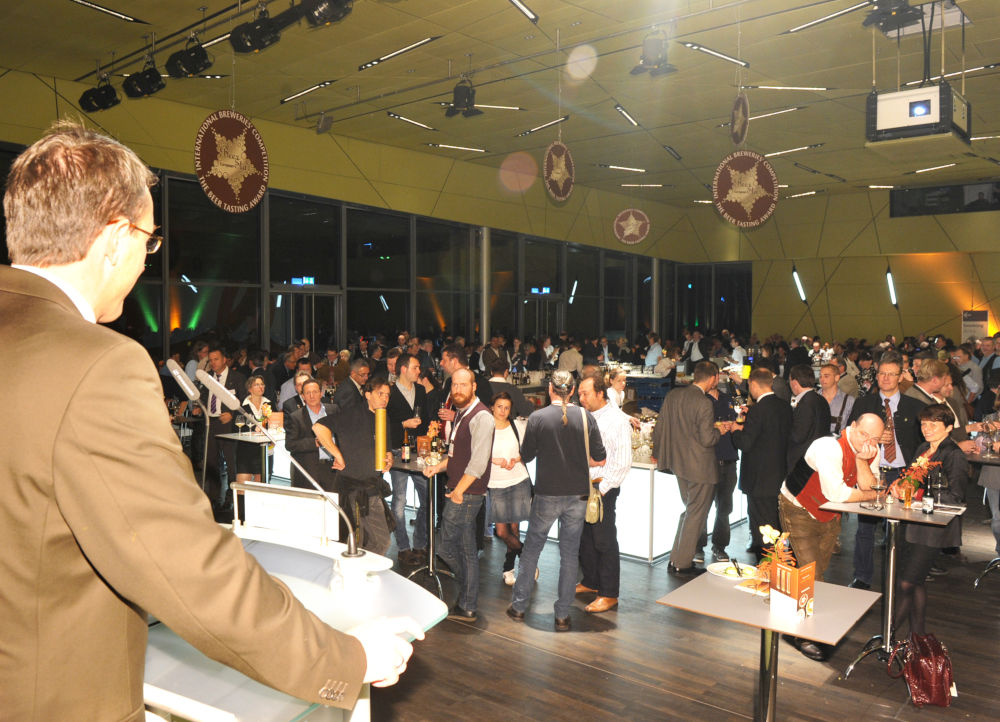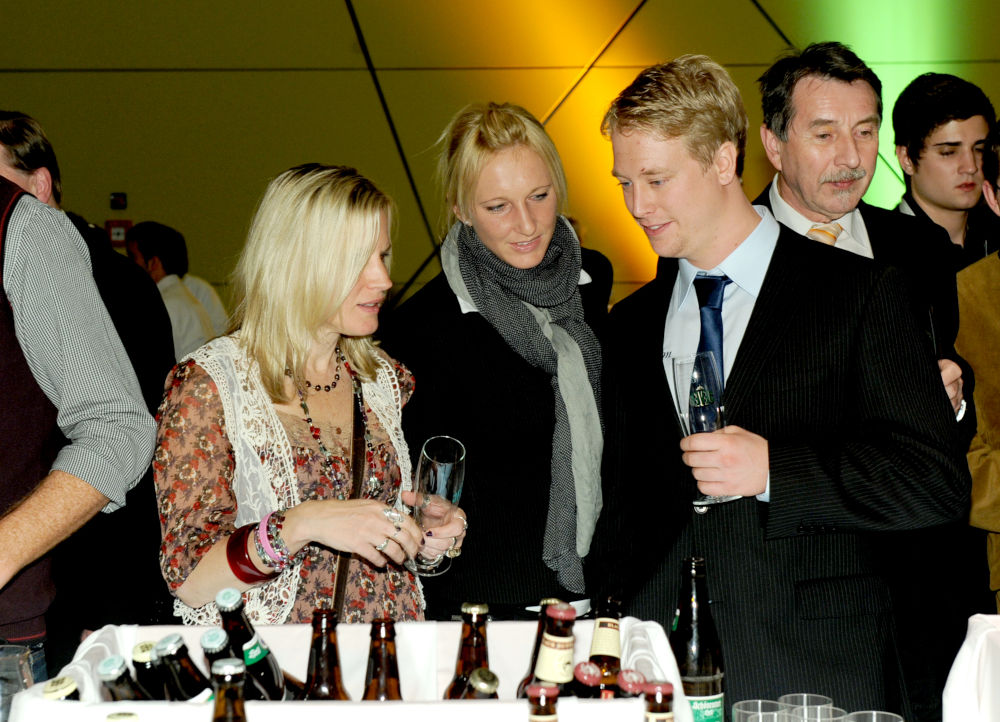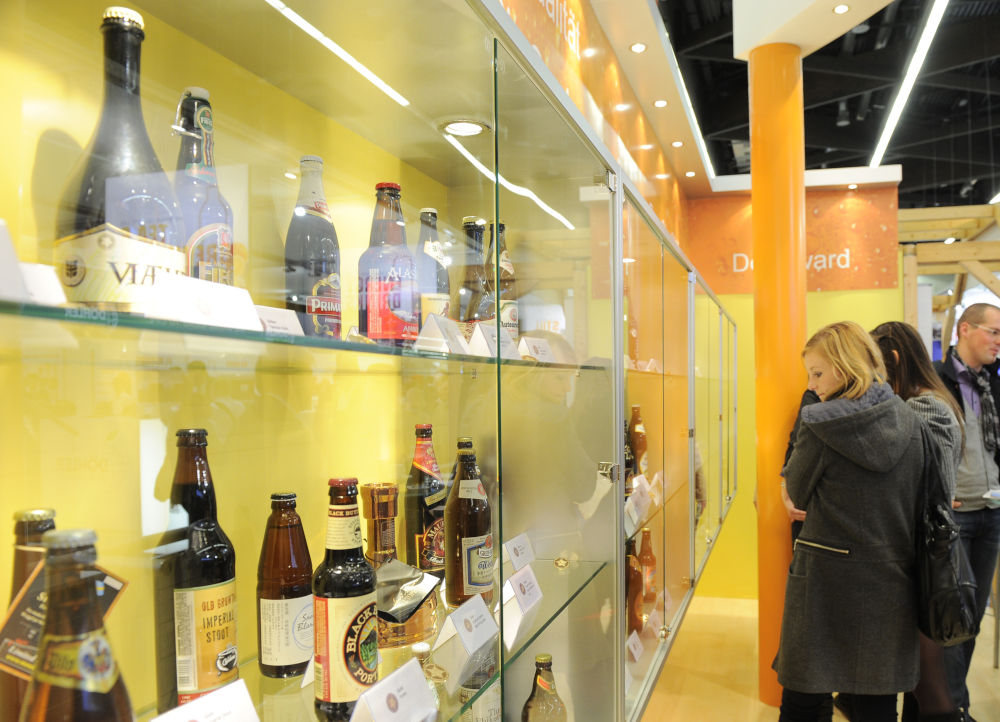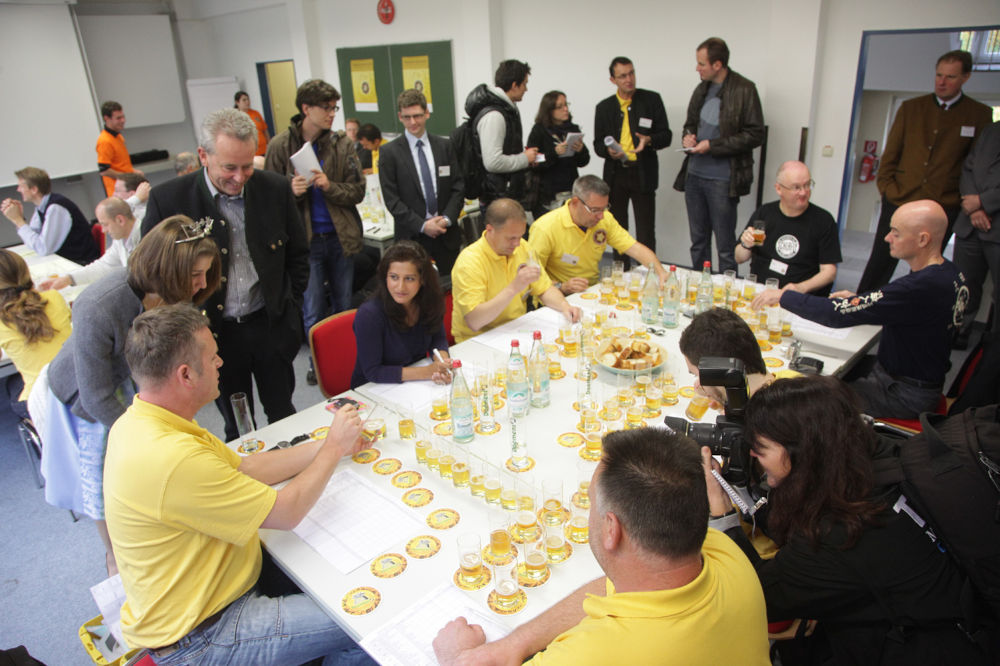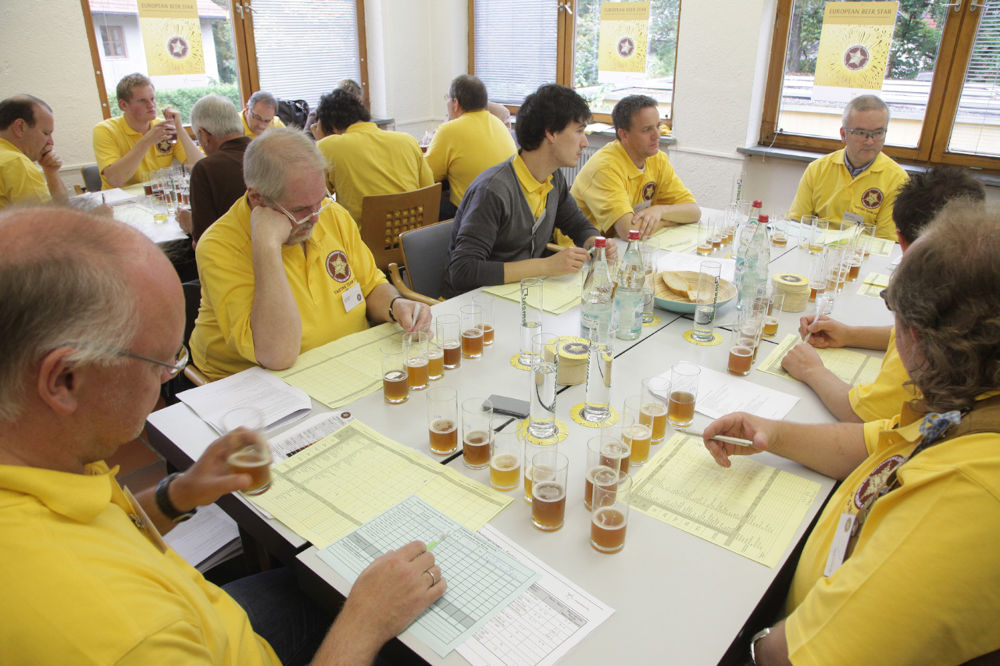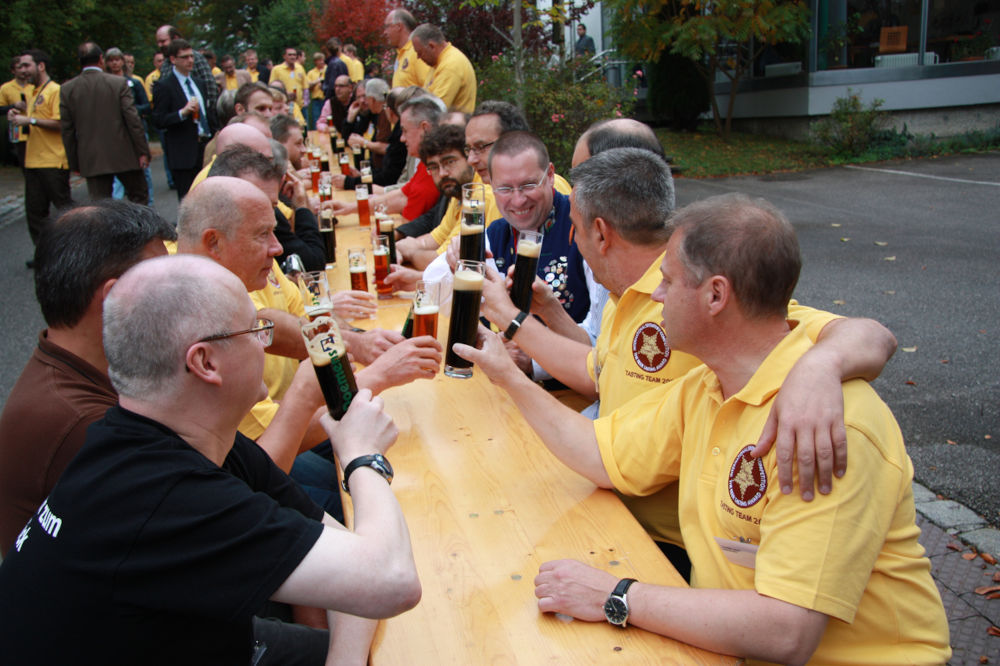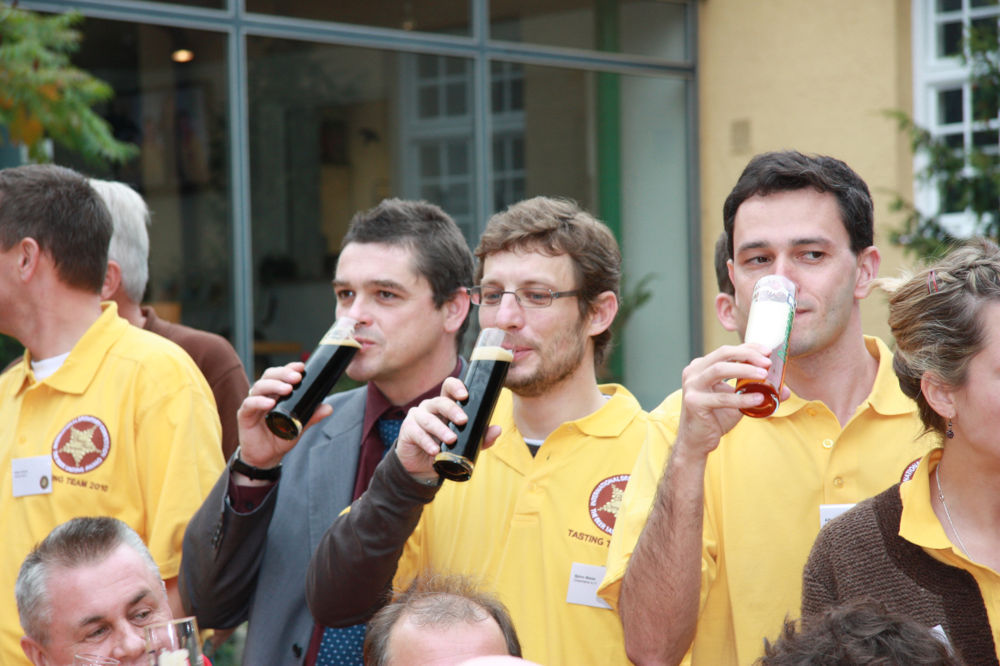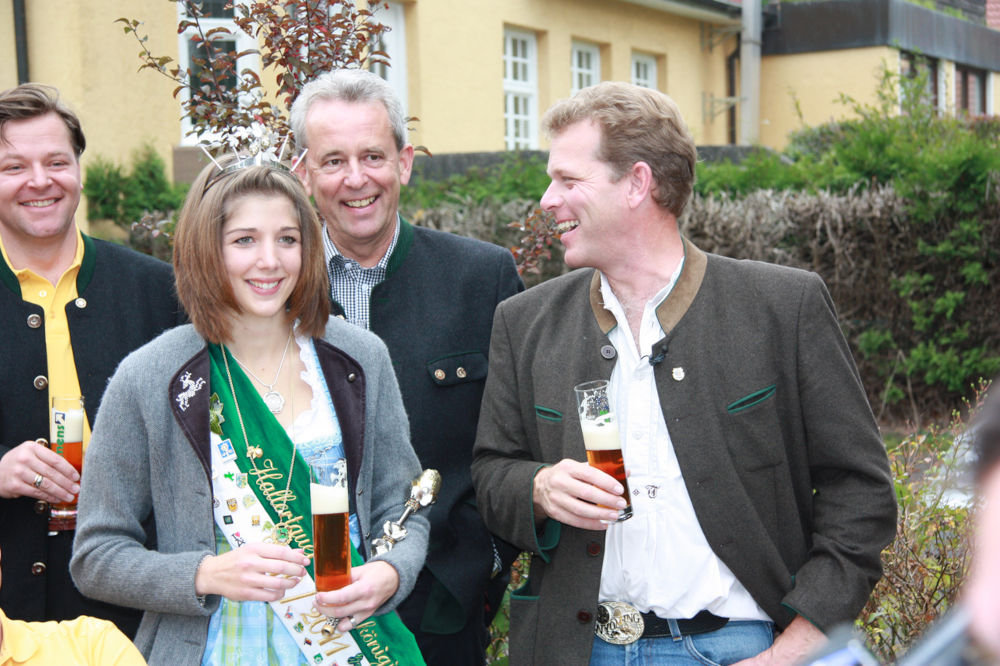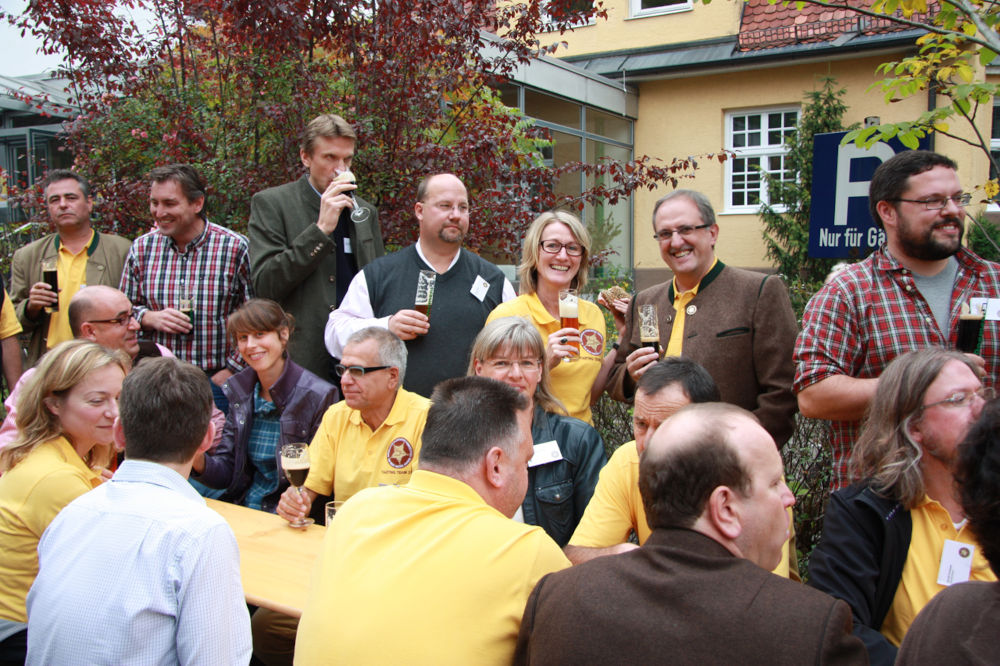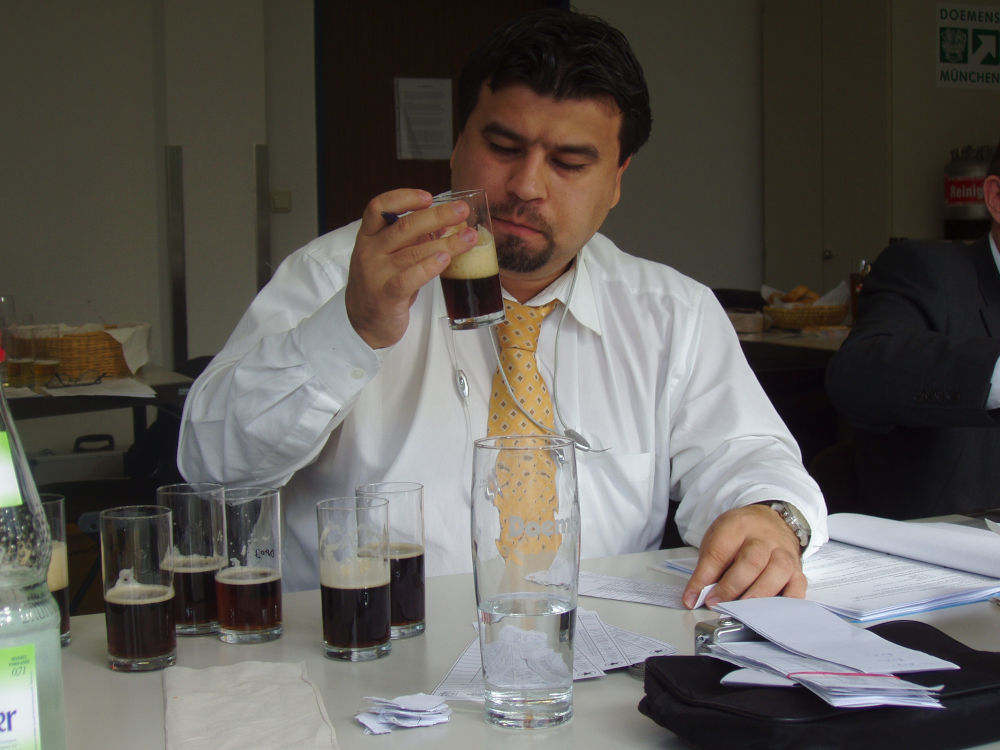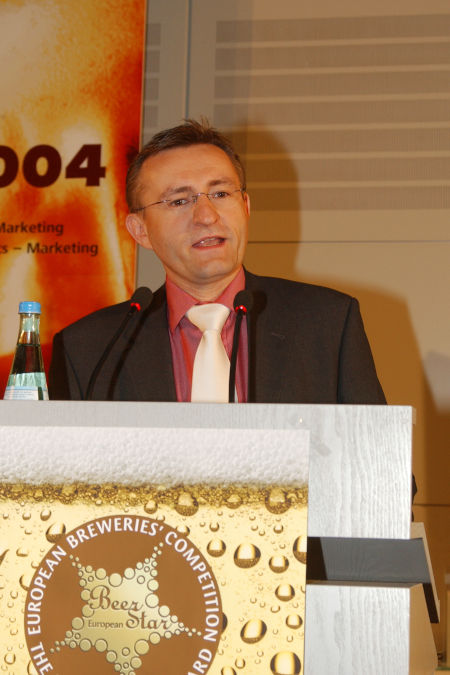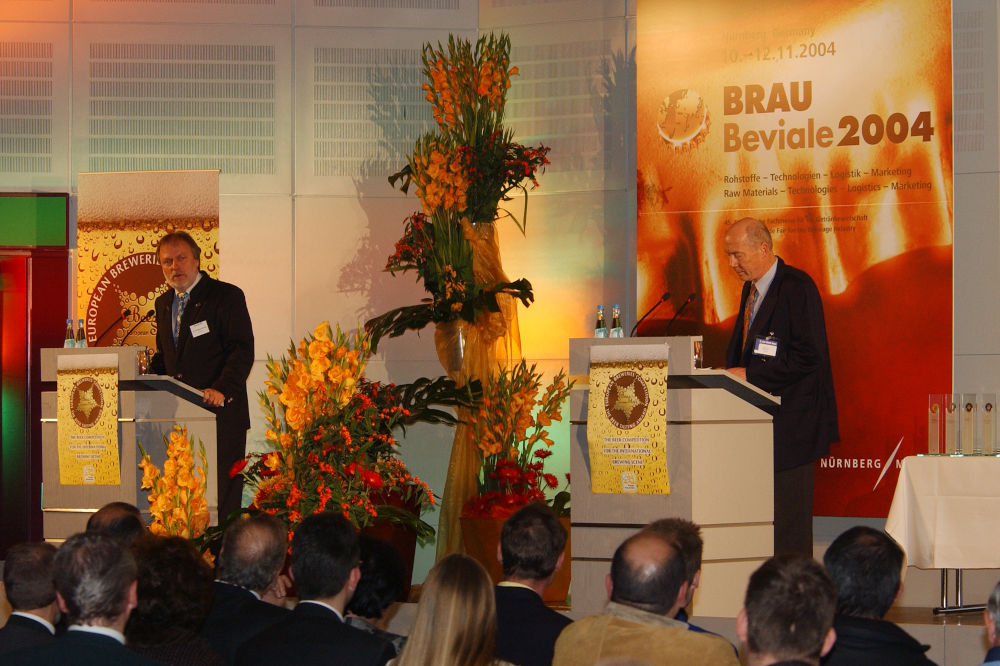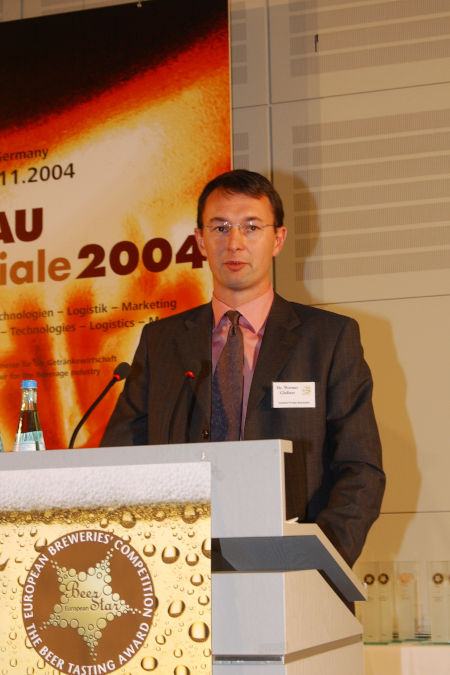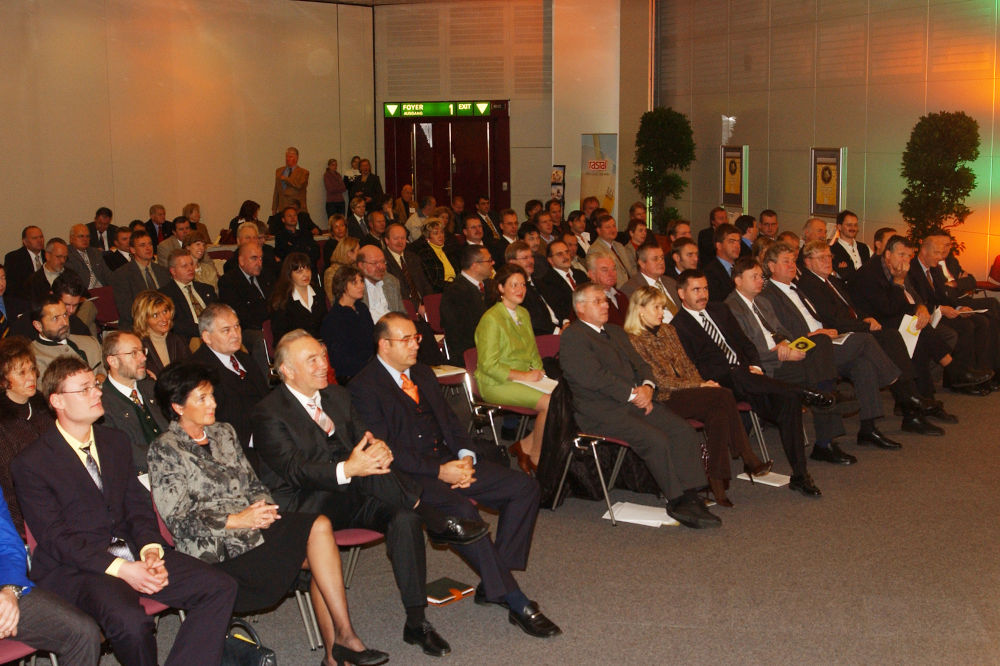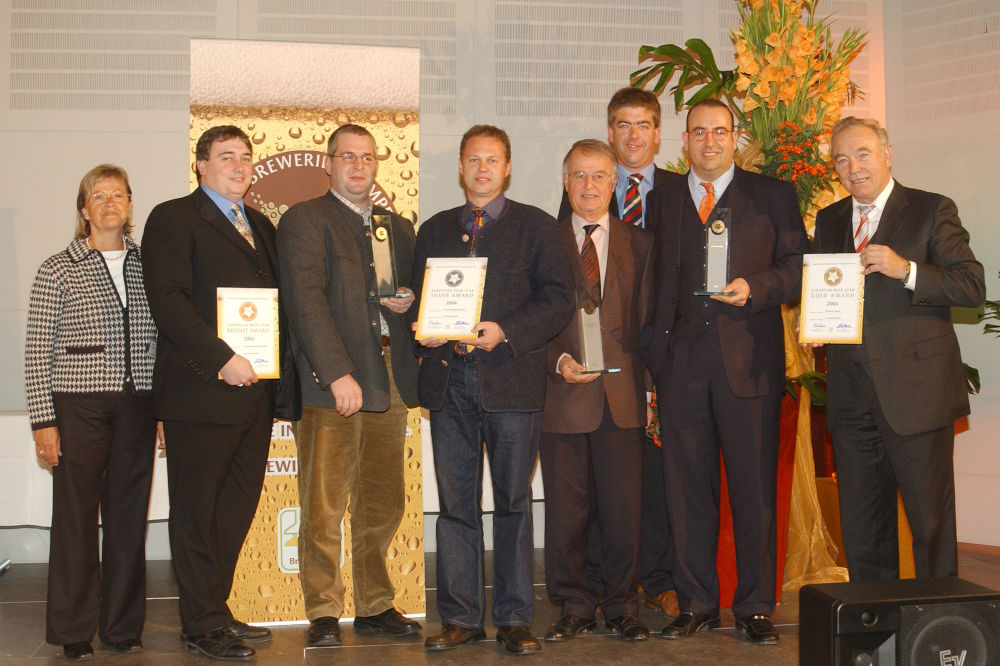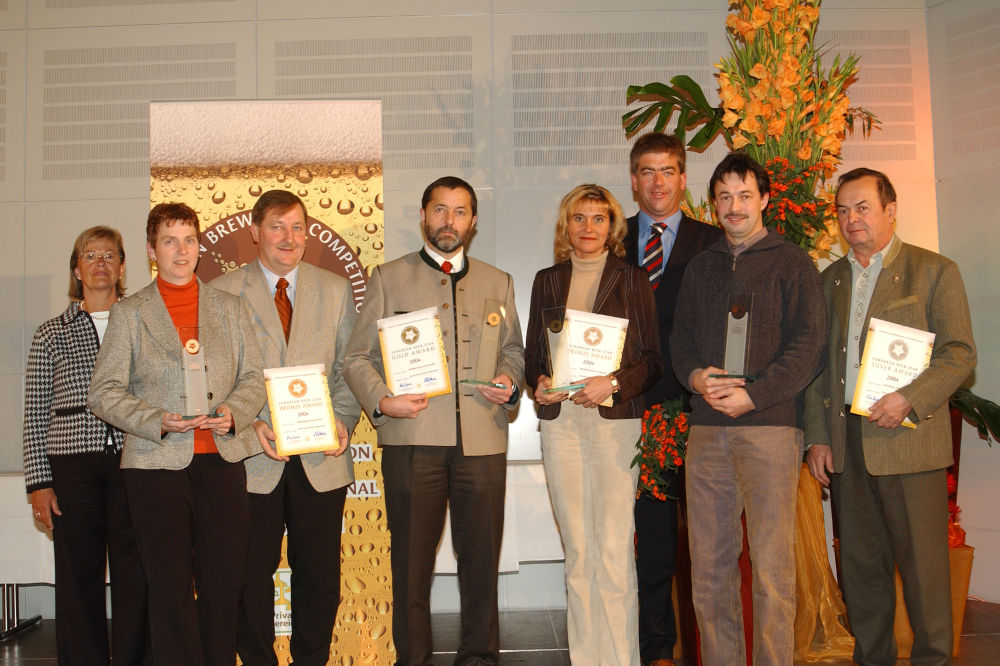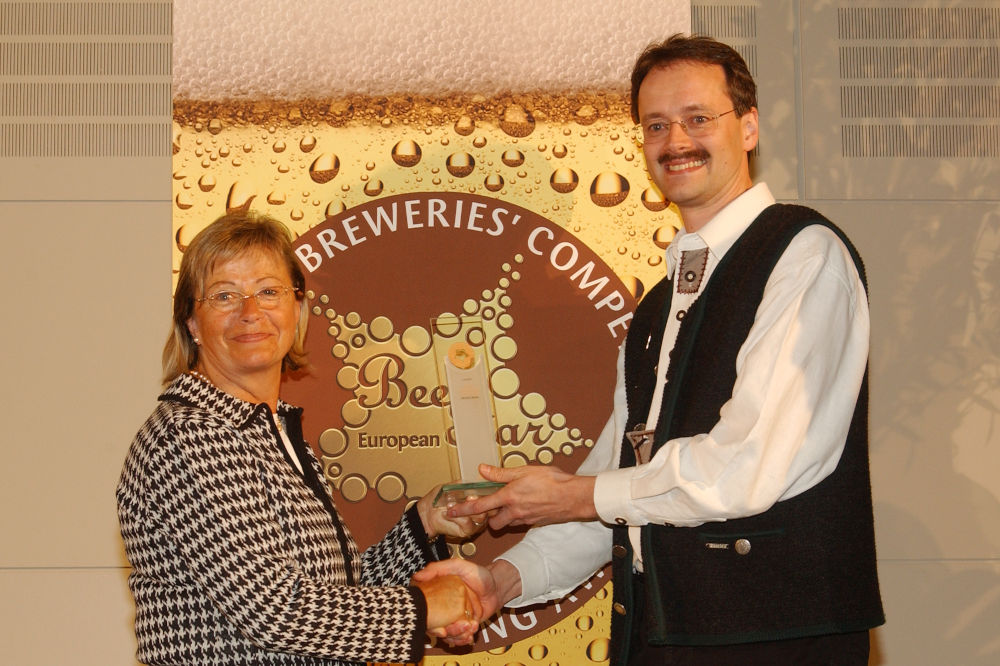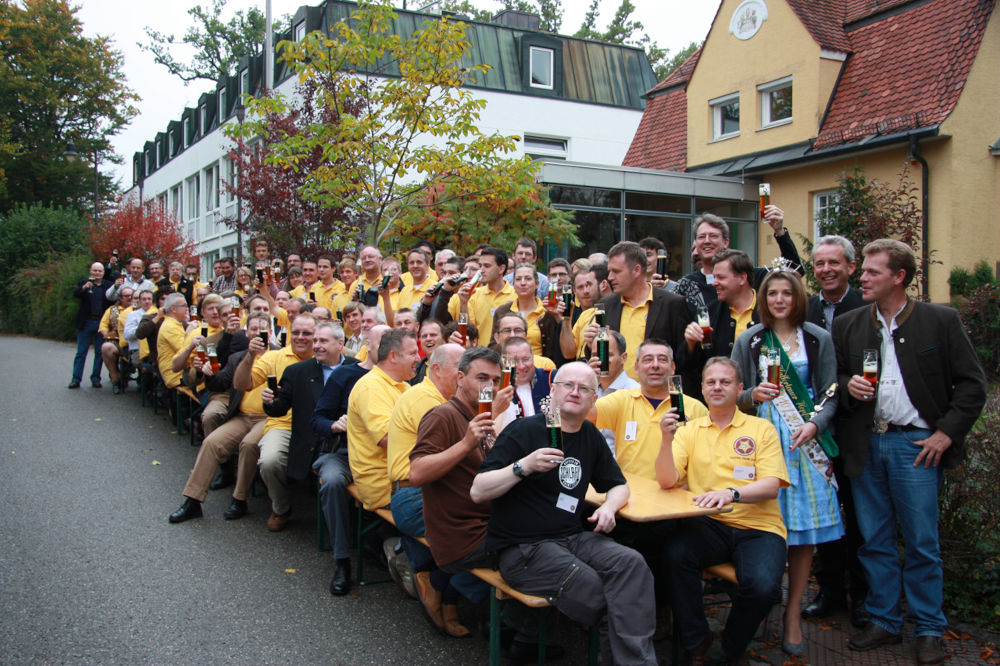European Beer Star 2004 –2021
International family gathering | European Beer Star awards have been presented for 17 years now – time to look back to the very beginning. How has the beer competition changed since 2004? What has stayed constant at European Beer Star? And where is it heading?
When you take a look at the pictures from the very first European Beer Star competition in 2004, it’s like looking at baby photos.
“Gosh, hasn’t it grown?”, you can almost hear yourself exclaiming. Back in 2004, the tasting sessions and prize-giving ceremony seemed extremely casual and almost like an informal family gathering.
Over the next 17 years the European Beer Star family steadily grew, with the award ceremony taking on a certain international glamour and the tasting sessions choreographed with the utmost professionality. European Beer Star manages to continue to lend its increasing internationality a distinct family atmosphere, however. “European Beer Star tastings have always been something of a family get-together,” is how Andrea Kalrait, executive director of BrauBeviale and member of the jury since 2014, describes the ambience at jury tasting sessions.
A European Beer Star is born
“I first had the idea of staging a different kind of competition for beer at the turn of the millennium, as I’d noticed for some time that at one major German beer competition, where the results of analysis and shelf life had an extremely big influence on the awarding of the medals, special beers, and particularly hoppy ones, were relegated to the sidelines. I was thinking of a consumer-oriented beer rating system that focussed on outstanding sensory characteristics and mirrored the variety of taste prevalent in our beer landscape,” explains Dr. Karl-Ullrich Heyse, then editor-in-chief and now publisher of BRAUWELT.
The idea was quickly met with enthusiasm by Dr. Werner Gloßner, Roland Demleitner, Stefan Stang, Michael Schmitt and Dr. Wolfgang Stempfl, who together with Dr. Heyse became the founding team of European Beer Star. Together they launched the 1st European Beer Star Awards in 2004, marking the start of a success story that is still being written today.
European Beer Star is undoubtedly also so successful because it fills a large gap. Dr. Gloßner, now managing director of the Doemens Academy and in 2004 as general manager of Privaten Brauereien Bayern one of the award’s founders, adds, “When the basic decision was made during a board meeting of the Verein zur Förderung mittelständischer Privatbrauereien (i.e., association for the promotion of medium-sized private breweries) back in 2002, you could already feel it: seasoned brewers wanted this kind of assessment, wanted to have the taste of their beer rated and not which analytical values it has. This was unprecedented in Germany. This impression was strengthened further in the test run at BrauBeviale 2003 that involved a good 30 beers and a group of 15 tasters. Star chef Alexander Herrmann was on the jury; he tasted the beers and described what he perceived. And everyone who was there gaped in wide-eyed astonishment because for the first time they’d heard that you could taste and describe beer in another way, too. The first European Beer Star competition in 2004 was thus the logical consequence and clocked up over 200 entries with little advance warning – Brewers were madly keen on this kind of competition; they wanted to be in on the act and of course win.”
Since its beginnings European Beer Star has been organised by Private Brauereien Bayern e.V. and Private Brauereien Deutschland e.V. The tasting sessions are traditionally held at the Doemens Academy in Gräfelfing near Munich and the awards are then presented at Winners’ Night during BrauBeviale. This in itself illustrates one important trait of European Beer Star: there’s a great emphasis on teamwork.
The competition is not just staged by one association alone but instead shouldered by lots of different partners working closely together.
The entries
The competition kicked off in 2004 with 271 entries from 14 different countries. At that time there were just 18 categories, in which 52 medals were awarded. The number of beers submitted didn’t hit the 1000 mark until 2010, with the magic number of 2000 exceeded in 2016. The organisation saw its highest number of entries to date in record year 2019 with 2481 submissions from 47 countries.
We have to disregard 2020 somewhat owing to corona, yet despite all the restrictions 2036 beers from 42 countries were entered last year. In the meantime, there are 70 categories, which is why a total of 210 medals were awarded in 2020.
All in all, since 2004, 22 911 beers from 84 countries of the world have been tasted by the European Beer Star jury during the course of the competition. This is a logistical feat of achievement that can only be mastered with the help of cold-storage tents set up in the Doemens Academy courtyard and countless helpers. Each year those responsible are faced with new challenges in this respect.
Stefan Stang, now general manager of Private Brauereien Bayern and the first project manager of European Beer Star from 2003 to 2016, explains how the event has managed to become so international. “Brewers have told us that the awards earn them a good reputation and boost sales, that they appreciate the professional organisation and top-class jury with its expert feedback. The family atmosphere, public Consumers’ Favourite award and Winners’ Night format unique the world over are also key factors for many breweries.”
The expert jury
An increasing number of entries of course calls for a bigger and bigger jury. And this has also become more international over the years. Whereas in the first few years the largely German jury featured only a handful of ‘exotic exports’ from Poland, the Czech Republic or Rumania, in time an extremely international network of European Beer Star jury members has become established, underlining the aspirations of the competition.
In 2019, 145 beer experts from 28 countries tasted the submitted beers. Due to the travel restrictions imposed by the COVID-19 pandemic, in 2020 the jury numbered just 74, but it’s hoped that this will be different this year.
European Beer Star’s international expert jury comprises experienced beer specialists with a range of professional backgrounds. In blind tasting sessions the members of the jury assess the submissions according to the quality criteria of sensory experience and enjoyment from a consumer‘s point of view – without recourse to laboratory analysis. What counts are beer quality and adherence to the category definitions.
The family nature of European Beer Star is also shared by the expert jury. “For our international family of tasters not only is the tasting experience all-important but also how and where this takes place, meeting up with others, the discussions. If you provide a communicative environment by staging joint events and keeping in contact throughout the year through social media, you can not only maintain these links but also strengthen and build on them. It’s important that our tasting family doesn’t become a closed shop; constantly adding new faces provides new impetus and encourages people to want to be a part of it all,” states Dr. Gloßner.
According to Stang, European Beer Star’s family of tasters is also an excellent multiplier. “European Beer Star has gradually become a go-to event for top-class international tasters and they of course also attract entries from their own countries of origin.”
The categories
If we now take a look at the award categories, that have risen from 18 to 70, the question arises as to where all these new categories come from. The first 18 were defined by the founding team; since then, the others have evolved from the competition itself. Jury member and table captain Kalrait tells us how. “If we notice any changes during tasting, we on the jury report this back to the organisers. For example, we may suggest which categories should perhaps be split because the beers here are still too different. Sometimes, great beers can’t assert themselves in their category because of the predefined conditions; in a category of their own, however, they’d win a medal. These are the points we tweak to make clearer distinctions between the various categories. In 2020 we had five new categories. One of these was a Bohemian-style session lager designed to give lighter beers a chance. There was also a new category for dry-hopped alcohol-free lagers, as the dry-hopped non-alcoholic varieties naturally steal the show when it comes to sensory characteristics but this basically has nothing to do with the quality.”
In 2021 European Beer Star will have 70+1 categories. In the new special free-style beer category exceptional creations are to be honoured that can’t be forced into a given set of criteria. This is why there are also no analytical restrictions for entry – another new feature that demonstrates just how versatile European Beer Star is. “We aim to be up to the minute with our categories; however, focussing on European beer styles will always be important,” emphasises Strang.
The increasingly extensive list of categories then of course also includes a few styles of beer that even beer pros have little experience of to date. How can these types of beer then be assessed? “The table captains always turn up one day early to the tastings for a team leader meeting. This explicitly handles the new beer styles. So that you know which range of beers you’ll be dealing with, where discussion might be necessary and so that the table captains adopt a unified approach,” explains jury member Kalrait.
The medal winners
In the end, it all boils down to winning. The uncontested top medal winner is Germany with a total of 1043 European Beer Star awards since 2004. Europe is then briefly out of the innings and we turn to the USA, where in the last 17 years American breweries took away no fewer than 456 golds, silvers and bronzes. Italy holds third place with 163 medals. The top five winners of all time are rounded off by Belgium (140) and Austria (95).
Gold medals have also been presented to the Czech Republic (20), Brazil (14), Japan (11), Australia (9), Poland (8), Russia (8), Canada (6), Taiwan (5), Myanmar (2), South Korea (2), Namibia (1) and Thailand (1), among others – statistics that serve to underline the international character of European Beer Star.
“These successes then prompt more breweries from these countries to enter their beers for European Beer Star in the following year and the degree of internationalism more or less increases all by itself,” Stang smiles. PR with international trade journals and cooperation with partners like the Brewers Association in the USA of course also play a big role in internationalisation, with the aim of making European Beer Star even more popular and overcoming the logistical hurdles.
One piece of background information from Dr. Gloßner also shows how much charisma European Beer Star has in the international brewing industry. “Winning an award from European Beer Star in Germany for the sensory properties of a beer from a professional tasting team, being one of just three award-winners in a beer category; for many, that’s like winning the Olympics. And you can communicate this to your customers extremely well. I’ve experienced brewery parties thrown to celebrate an award from European Beer Star where there were over 1000 guests and they were all so proud of their beer, that one of them had made it.”
Further development
European Beer Star is distinguished by the fact that it has constantly developed over the years – whether this be in the expansion of its categories, internationalisation of the jury or the party on Winners’ Night.
Last year the organisers demonstrated just how adaptable they can be. Despite the COVID-19 restrictions, they staged a jury tasting event that thanks to its perfect hygiene concept made it possible for European Beer Stars to be awarded at all in 2020.
“We want to develop the competition further according to industry requirements, improve assessment for non-winners, digitalise tastings, create international collection points to facilitate the transportation of the beers, make European Beer Star even better known among consumers, work together with other beer competitions, further intensify the exchange between tasters and in doing so always keep our sights firmly fixed on the benefits for our participants,” states Stang, when asked about his plans for the future of European Beer Star.
Keywords
European Beer Star history international beer market beer tastings beer competitions
Authors
Lucia Baier
Source
BRAUWELT International 4, 2021, page 230-234
Organizer
- Private Brauereien Bayern e. V., Munich, Germany

